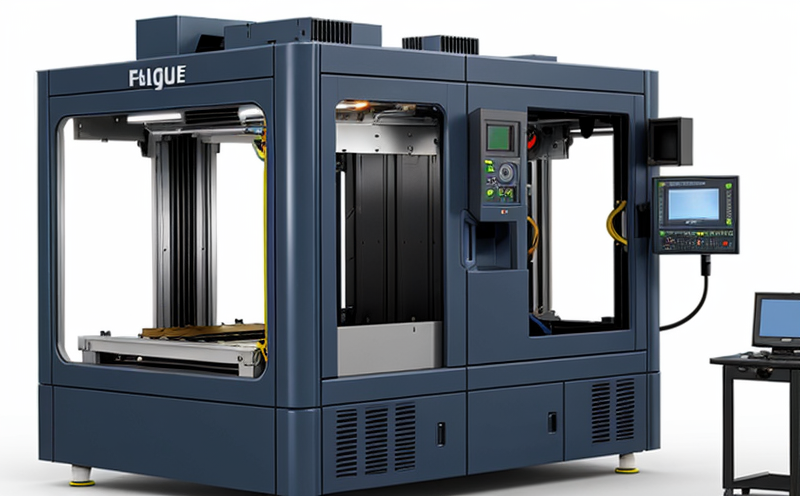ASTM E1823 Terminology for Fatigue and Fracture Testing
The ASTM E1823 terminology is a fundamental cornerstone in the field of fatigue and fracture testing, particularly relevant to additive manufacturing (AM) and 3D printing. This standard provides definitions, symbols, and abbreviations that are crucial for consistent communication among professionals in this rapidly evolving sector.
ASTM E1823 is essential when dealing with the lifecycle testing of printed components. It ensures that all involved parties—whether they are engineers, quality managers, or compliance officers—are on the same page regarding terminology and test methodologies. The standard supports the development of robust testing protocols and enhances the accuracy and repeatability of fatigue and fracture tests.
The ASTM E1823 framework is particularly important in AM because this technology allows for the creation of intricate geometries that may present unique challenges during testing. By adhering to this terminology, laboratories can ensure that they are using standardized methods for evaluating the mechanical properties of 3D-printed parts under cyclic loading conditions.
The ASTM E1823 standard is not merely a glossary but also serves as a reference guide for understanding the complex nature of fatigue and fracture phenomena. It defines key parameters such as stress amplitude, cycle life, and crack propagation rate, which are critical in assessing the reliability and durability of AM components.
Understanding these terms is vital because they influence the design and manufacturing processes. For instance, knowing the precise definition of "fatigue limit" helps engineers optimize part geometry to maximize strength while minimizing weight. Similarly, being able to interpret “crack initiation” accurately can guide adjustments in printing parameters to enhance part integrity.
The standard also plays a pivotal role in ensuring compliance with international regulations and industry best practices. Compliance officers can use ASTM E1823 as a benchmark when auditing internal processes or reviewing external reports from third-party labs. This ensures that all testing aligns with global standards, thereby reducing the risk of non-compliance issues.
In summary, ASTM E1823 is an indispensable tool for any laboratory involved in fatigue and fracture testing of 3D-printed components. It provides a common language that facilitates clear communication among stakeholders, supports robust testing methodologies, and enhances regulatory compliance.
Benefits
The adoption of ASTM E1823 terminology brings numerous advantages to laboratories and manufacturers engaged in fatigue and fracture testing of 3D-printed components. One significant benefit is the enhancement of interlaboratory communication, ensuring that all parties involved understand each other’s terms and definitions.
- Consistency: Ensuring consistent use of terminology across different labs improves reliability and repeatability of test results.
- Clarity: Clear definitions reduce ambiguity in testing protocols, leading to more accurate interpretations of data.
- Compliance: Alignment with ASTM E1823 facilitates compliance with international standards, reducing the risk of non-compliance issues.
- Efficiency: Standardized terminology streamlines communication between engineers, quality managers, and compliance officers, enhancing overall efficiency.
Moreover, by adhering to ASTM E1823, laboratories can position themselves as leaders in the field of AM testing. This not only enhances their reputation but also opens up opportunities for collaboration with leading manufacturers and research institutions.
Industry Applications
The ASTM E1823 terminology is widely applicable across various industries that rely on 3D-printed components, particularly those involving fatigue and fracture testing. Aerospace, automotive, medical devices, and defense sectors are prime examples where this standard plays a crucial role.
In the aerospace industry, for instance, the reliability of AM parts is paramount due to the critical nature of aircraft components. ASTM E1823 helps in assessing the cyclic loading conditions under which these parts will perform throughout their lifecycle. This ensures that any potential weaknesses are identified and addressed early in the design process.
The automotive industry also benefits significantly from the use of ASTM E1823 terminology. With increasing demand for lightweight, durable vehicles, fatigue testing is essential to ensure that 3D-printed parts can withstand the stresses of daily operation without failure.
In medical devices, where patient safety is a top priority, ASTM E1823 provides a robust framework for evaluating the durability and reliability of AM components. This ensures that implants and other medical devices meet stringent quality standards before they are approved for use.
The defense sector, too, relies heavily on 3D-printed parts due to their ability to produce complex geometries without sacrificing strength or weight. ASTM E1823 helps in ensuring these parts can withstand the harsh conditions under which military equipment operates.
Competitive Advantage and Market Impact
The competitive advantage of adopting ASTM E1823 terminology is substantial, particularly for laboratories and manufacturers involved in 3D-printed component testing. By ensuring consistent use of terminology across different labs, this standard enhances interlaboratory communication, leading to more reliable and repeatable test results.
- Market Differentiation: Compliance with ASTM E1823 can be a key differentiator in the market, especially for laboratories seeking to establish themselves as leaders in AM testing.
- Prestige: Adherence to international standards like ASTM E1823 can enhance a laboratory’s reputation and credibility among clients and partners.
- Collaboration Opportunities: Laboratories that adhere to this standard are more likely to attract collaboration from leading manufacturers and research institutions, further enhancing their market position.
- Innovation Support: By ensuring standardized testing methodologies, ASTM E1823 supports continuous improvement in AM processes, fostering innovation within the industry.
The use of ASTM E1823 terminology also has a significant impact on the broader market. It ensures that all labs involved in 3D-printed component testing are using consistent and reliable methods. This standardization not only improves the overall quality of AM parts but also fosters trust among end-users, which is crucial for the widespread adoption of this technology.
Ultimately, by embracing ASTM E1823 terminology, laboratories can position themselves at the forefront of industry trends, ensuring they remain competitive and relevant in a rapidly evolving market.





